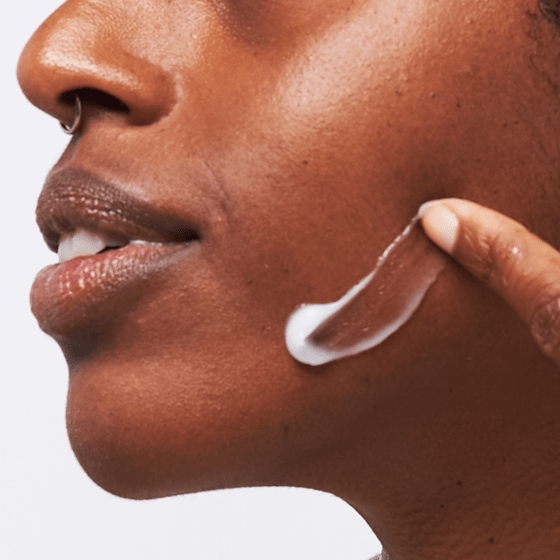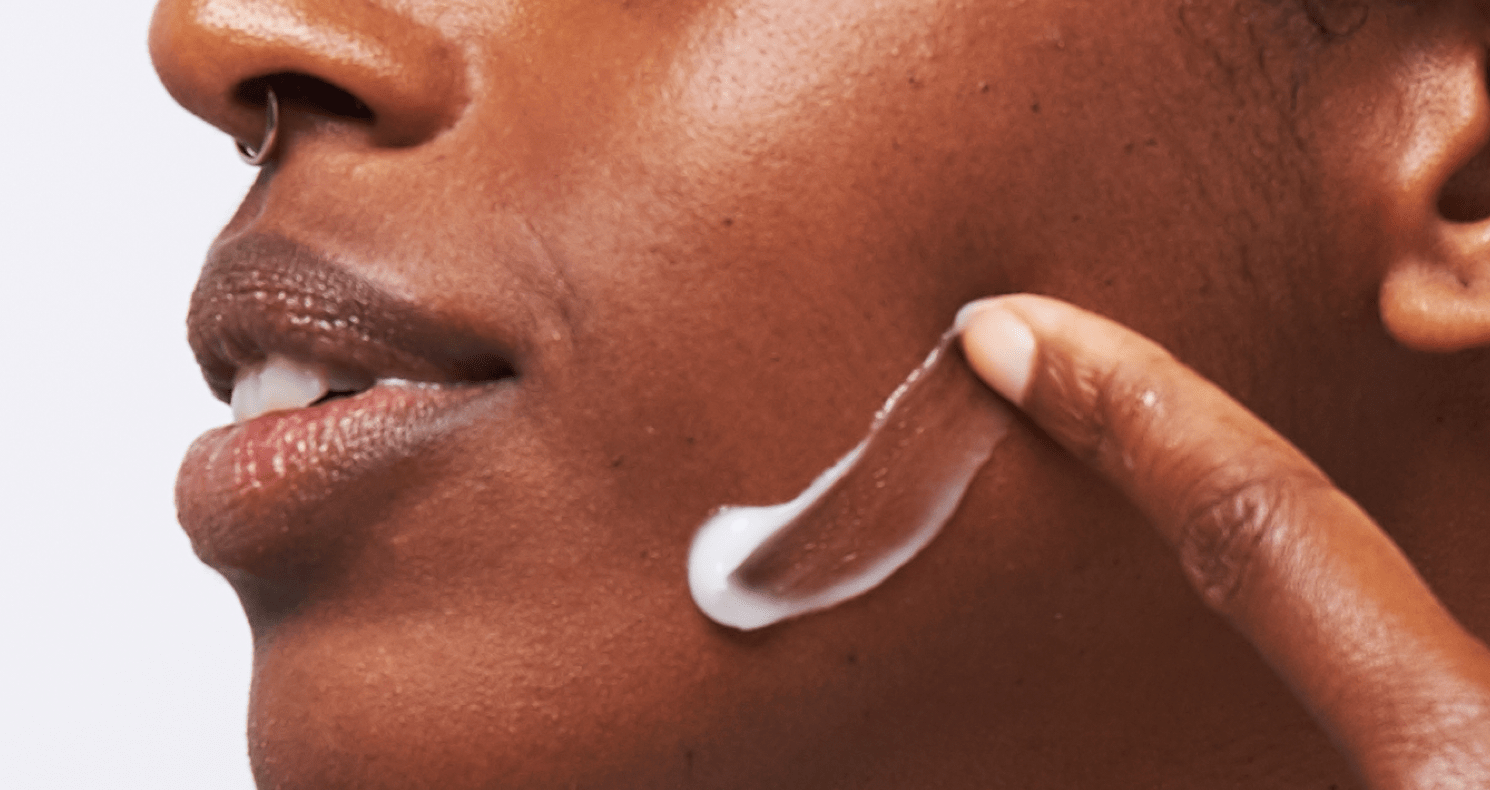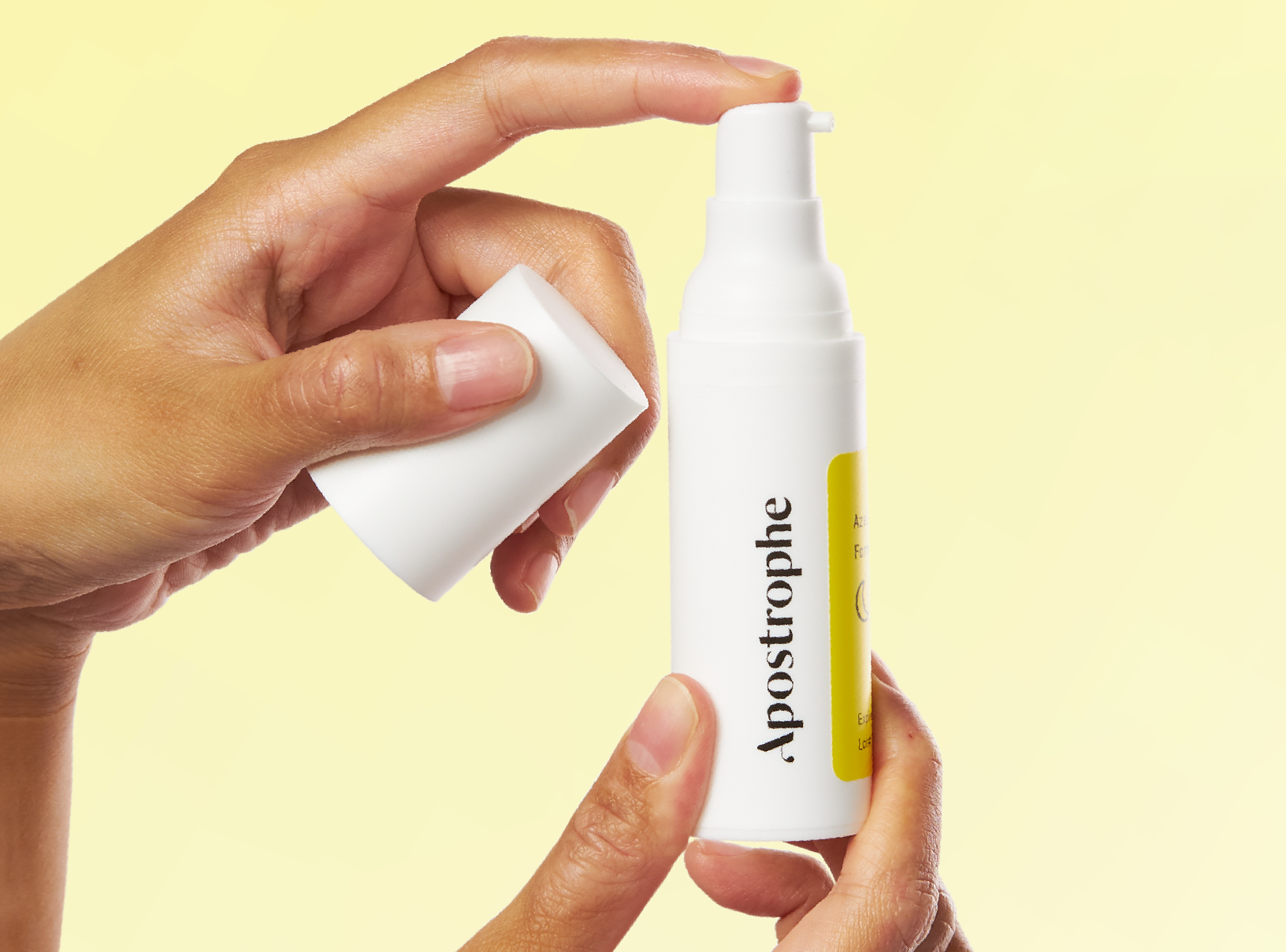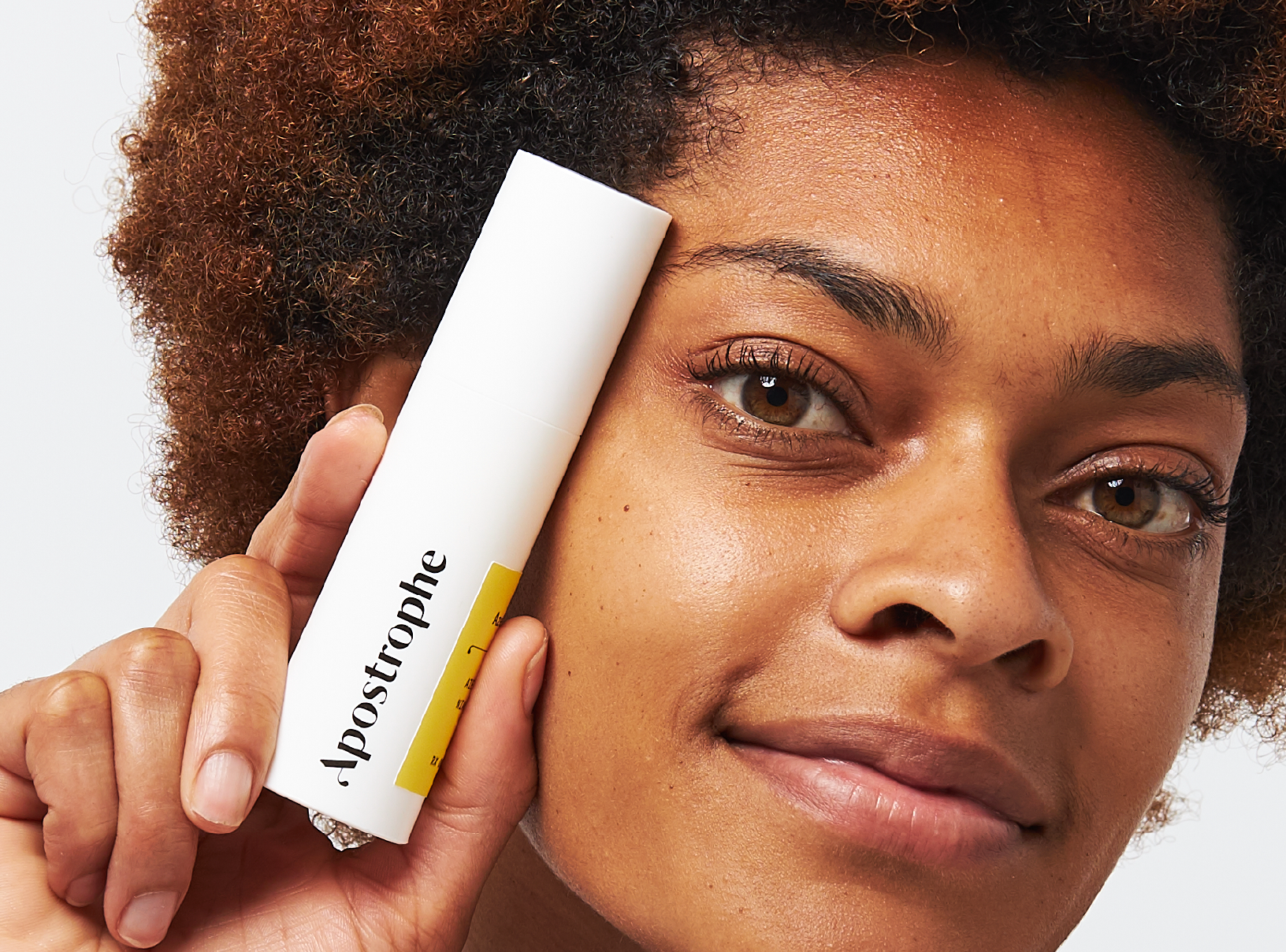Education
How to Get Rid of Fine Lines


SHARE
Education
How to Get Rid of Fine Lines
Medically reviewed by Mary Lucas, RN
Written by Apostrophe Team
Last updated 10/1/2024
Fine lines are a common sign of aging that many people notice as they enter their 30s, 40s, and beyond.
Like many other signs of aging, fine lines develop due to changes in your skin that occur as you get older.
While it’s impossible to stop these changes completely, a combination of good habits, over-the-counter products, and medications can help to slow them down.
If you already have fine lines or wrinkles, several treatments can also help to get rid of them or make them less visible.
Below, we’ve explained what fine lines are, as well as how they develop on your face and other parts of your body.
We’ve also listed several science-backed methods that you can use to get rid of fine lines or make them less visible.
Finally, we’ve listed lifestyle changes and habits that you can use to prevent fine lines, wrinkles, and other signs of aging from developing in the first place.
Fine Lines: The Basics
The term “fine lines” is generally used to refer to small, shallow wrinkles that develop on your face. You may notice them beside and under your eyes, on your forehead, and in a variety of other areas.
Fine lines develop as a result of age-related changes in your skin. Over time, your skin tends to become less elastic. Due to the effects of gravity, certain areas of your skin form fine lines and wrinkles.
Some aspects of aging are unavoidable, making it inevitable that you’ll eventually notice some fine lines and wrinkles as you age. However, the right combination of products and habits can help to slow down certain aspects of the aging process.
Practicing skin-friendly habits, such as limiting your time in the sun, wearing sunscreen, and avoiding cigarettes and other tobacco products, can slow down the development of fine lines and other common signs of aging.
If you have mild fine lines, over-the-counter skin care products may help to make them less visible.
Cosmetic treatments, such as Botox®, dermal fillers, dermabrasion, and others can also make fine lines less visible.
What Are Fine Lines?
Fine lines are small, thin wrinkles that develop on your face. While the term “wrinkles” is usually used to refer to deep, easily visible lines, the term “fine lines” usually refers to smaller lines that have only recently developed.
Most fine lines develop around your eyes, particularly at the edges of the eyes (crow’s feet).
It’s also common for small, fine wrinkles to develop under your eyes, on your forehead, and in other parts of your face.
How Fine Lines & Wrinkles Develop
Fine lines, wrinkles, and other common signs of aging all develop as a byproduct of your skin’s natural aging process.
Just like your joints, hair, and numerous other parts of your body, your skin changes as you get older.
Over time, your skin naturally becomes less elastic. When combined with the effects of gravity, this loss of elasticity means that the skin in certain parts of your face and body starts to develop creases or wrinkles.
Since your eyes and forehead play such a key role in forming your facial expressions, they’re often the first places that fine lines, wrinkles, and other signs of aging become visible.
At the same time as your skin is becoming less elastic, it also slowly loses part of its thickness, as well as some of the fat that contributes to its appearance.
It’s also common for your skin to become drier as you age -- another factor that may contribute to fine lines and wrinkles.
Issues such as dryness and age spots may become more common, making your age more obvious and apparent on your skin.
Some aspects of your skin’s aging process are genetic, meaning they’re completely outside of your control. However, other aspects of the aging process are closely related to your habits.
One of the largest causes of skin damage and aging is your level of exposure to the sun.
When you spend time in bright sunlight, ultraviolet (UV) radiation causes damage to your skin, affecting its ability to create important structural proteins such as collagen and elastin.
This can reduce your skin’s elasticity and speed up the development of fine lines, wrinkles, and other signs of aging.
Other habits, such as smoking or not getting enough sleep, can also affect your skin’s ability to produce collagen and maintain itself.
The effects of sunlight, smoking, and poor sleep aren’t immediate, meaning you won’t suddenly notice fine lines after a day at the beach or night out.
However, over the long term, these habits can have a significant, noticeable effect on your skin.
How to Get Rid of Fine Lines
Numerous treatments are available for fine lines, from over-the-counter products to prescription medications, injectable fillers, and cosmetic procedures.
Like other signs of aging, fine lines can vary in severity. If you only have a few shallow fine lines, simple over-the-counter products may be enough to make them less visible. If you have deeper lines, you may need to use a more potent treatment.
Over-the-Counter Products
Simple, readily available over-the-counter products can have a noticeable effect on your skin’s elasticity, texture, and appearance. Try adding the following products to your skincare routine to keep fine lines and wrinkles at bay:
Moisturizer. One of the most effective products for slowing down the evidence of skin aging is moisturizer. Used regularly, moisturizer improves your skin’s moisture retention, giving it a more youthful appearance with fewer visible lines, spots, and other signs of aging.
Over-the-counter retinoids. Retinoids work by speeding up your epidermal turnover cycle -- the process through which your body replaces old, dead skin cells with newer ones. Research shows that topical retinoids help to reduce age-related fine wrinkles. You can find skin care products containing over-the-counter retinoids in many drugstores, beauty supply stores, and online.
Prescription Medications
If you have noticeable fine lines, or you’re starting to develop deeper wrinkles, prescription skin care medication may be the best option. Try the following:
Tretinoin. Tretinoin is a topical retinoid. Like other retinoids, it works by speeding up the rate at which your body produces new skin cells. Tretinoin is used for a variety of purposes, including treating acne. It’s also effective at reducing fine wrinkles and improving the discoloration that can develop in your skin as a side effect of aging.

PRESCRIPTION TRETINOIN
Target acne, dark spots, and signs of aging with this science-backed ingredient.
You can purchase tretinoin on its own as a prescription medication, or as one of several active ingredients in Apostrophe Prescription Anti-Aging Cream. You can also learn more about how tretinoin works in our detailed guide to tretinoin for wrinkles and skin aging.
Cosmetic Procedures
Several cosmetic procedures are used to make fine lines and deep wrinkles less visible.
Some of these work by targeting the underlying muscles that play a role in the development of fine lines, while others resurface the skin to make lines and other blemishes less visible. Options include:
Botulinum toxin (Botox®). Botox injections work by weakening or paralyzing the facial muscles that play a role in causing fine lines and wrinkles to develop. Botox is an effective treatment for wrinkles, but it requires ongoing maintenance to keep fine lines at bay. In general, you’ll need to get repeat Botox injections every few months to prevent fine lines from becoming visible again. Botox is priced per unit, meaning the more injections you receive, the more it will usually cost. On average, you can expect to spend about $300 to $600 for Botox treatment in a specific area of your face, such as your forehead and eyes.
Dermal fillers. Dermal fillers are substances that are injected into specific areas of your face in order to add fullness and make fine lines and wrinkles less visible. Fillers are a good option for softening lines, wrinkles and creases that can form on your face as you age. They’re also used to treat other signs of skin aging and damage, such as improving the texture of scars and other blemishes. Similar to Botox, dermal fillers need to be repeated every few months in order to remain effective. A single round of fillers will typically cost several hundred dollars, with the total price varying based on the amount of filler used.
Dermabrasion. Dermabrasion is a surgical procedure that involves “sanding” down the top layer of your skin using a special rotating device. This improves the texture of your skin and helps to remove irregularities such as fine lines and scarring. Dermabrasion typically costs $1,000 or more. As a minimally invasive surgery, it has a recovery period of several weeks, during which your skin may be swollen, sensitive, and pink in color.
Chemical peeling. Chemical peeling is a surgical procedure that involves removing the outermost layer of your skin using a chemical solution. This allows new skin to grow in its place with a smoother texture and fewer visible fine lines and wrinkles. Chemical peels can vary in-depth, with some using mild acids to penetrate only the outer layer of skin and others using stronger acids to deeply penetrate the middle layer of your skin. In general, deeper peels produce more dramatic and noticeable results. On average, the cost of a chemical peel is $600 to $700. Deeper peels typically have a longer recovery period and can cause issues such as redness, peeling, and discomfort in the first few days or weeks.
Laser skin resurfacing. Laser skin resurfacing involves removing the outermost layer of your skin with a surgical laser. This can help to reduce the appearance of fine lines and wrinkles, liver spots, scarring, and other common signs of aging. Laser skin resurfacing typically costs $1,200 to $2,000 or more, depending on the type of laser treatment used. Like with other exfoliating procedures, your skin may feel red, swollen, and itchy for several days to one week after the procedure.
How to Prevent Fine Lines & Other Skin Aging
The most effective way to deal with fine lines and other signs of facial aging is to prevent them from developing in the first place. Try the following habits, techniques, and lifestyle changes to reduce your risk of premature skin aging:
Limit your time in the sun
UV radiation from sunlight is a major source of premature skin aging. In fact, experts believe that UV radiation is responsible for 90 percent of the visible changes that occur in your skin as you get older.
Since UV radiation can take such a toll on your skin, it’s important to limit the amount of time you spend in direct sunlight.
Try to avoid spending long periods outdoors on sunny days, especially during peak sunlight hours.
Use sunscreen
When you do spend time outdoors, especially on sunny days, apply a broad-spectrum, SPF 30+ sunscreen.
Wear sunglasses
Squinting can speed up the development of fine lines around your eyes. Wear sunglasses on bright days so that you aren’t forced to squint when you’re outside.
Quit smoking
Smoking doesn’t just harm your lungs and heart -- it also has negative effects on your skin. In fact, research shows that cigarette smokers are more likely to develop facial wrinkles than non-smokers.
Limit your alcohol consumption
While drinking a small amount of alcohol isn’t very likely to damage your skin, regular drinking -- especially in large amounts -- can cause your skin to become dehydrated and damaged.
Try to limit your alcohol consumption to a moderate amount -- up to two drinks per day for men, or one for women.
Avoid making the same facial expressions over and over again
This causes your facial muscles to contract, allowing fine lines and wrinkles to develop over time as the skin forms into the same shape.
Eat a healthy, balanced diet
Try to avoid large amounts of simple sugars or refined carbohydrates, as these may speed up the aging process.
Instead, stick to a healthy, balanced diet that’s rich in fruits, vegetables, and other nutrient-rich ingredients.
It’s worth implementing these changes even if you already have noticeable fine lines, wrinkles, or other signs of aging.
Although changing your habits won’t reverse the signs of aging, it can help to slow them down and prevent them from getting worse.
In Conclusion
Fine lines are a common, normal sign of aging. While the best way to avoid them is to prevent them from developing in the first place, several options are available for treating fine lines after they appear.
When it comes to treating fine lines, the best approach is to stick to the basics by moisturizing your skin on a regular basis and using a science-backed approach such as using a medication like topical tretinoin.
It’s also important to practice skin-friendly habits, such as protecting yourself from sun damage, maintaining a healthy diet, and avoiding smoking or drinking alcohol excessively.
If you still have fine lines after several months, it may be worth speaking to a dermatologist or plastic surgeon about treatment options such as Botox, dermal fillers, or surgical treatments to resurface your skin and make fine lines and wrinkles less visible.
Shop this post

Tretinoin
Like what you just read? Sign up for our email list to get the scoop on skincare science delivered straight to your inbox.

Deep Dives
A dermatologist shares his thoughts on the recent studies about benzoyl peroxide and benzene.
Read More
Education
What is milia?
What is milia? Today, we’re jumping into one type of bump that you may have heard about most commonly in infants — milia.
Read More
Education
Best moisturizer for acne-prone skin
If you have combination acne-prone skin, figuring out which moisturizer is best for your skin might be tough. In this guide, we break down the best moisturizer for combination, acne-prone skin.
Read More
